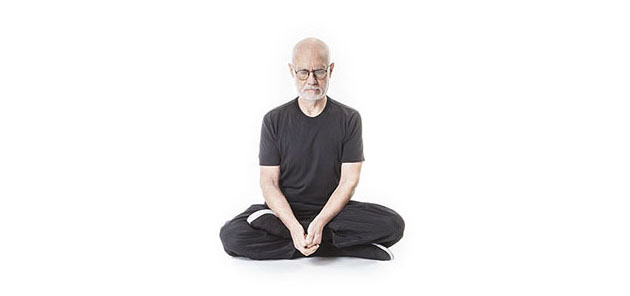Do Not Skip Exercising
There is a simple reality we all need to face ... simple but hard (just like meditation): When we get older the body deteriorates. That process sets in sometime after we’re thirty years of age, certainly before we’re forty. If we don’t do anything about it, things get progressively worse as we age and as a result we will be stiff sexa- or septua-genarians, unable to walk up stairs easily - or to walk comfortably altogether - and suffering from bad backs, aching joints etc.
Of the various things we can do about it (seeing doctors and having pain killers prescribed, invasive surgery performed, receiving regular massages, chiropractor treatments and visiting physiotherapists) the one I want to talk about is doing a simple regime of daily exercises.

Many years ago I read a book, the Ancient Secret Of the Fountain Of Youth (also called The Five Tibetan Rites). Leading on from there I found another book, The Five Tibetans. Both books talk about a series of exercises that can be performed at home, without any further tuition or a trainer.
I have adapted some of the exercises to suit myself (I don't mean disrespect to the Tibetan Rites, but I believe any exercise routine is good ... provided it's done properly; but two of the Rites just don't suit me: The spinning makes me dizzy and the leg-raise - with both legs - injured my back).
So, I have performed them - in some form or another - on most days for some twenty five years. As a result I am flexible, I am energetic, I run up the two flights of stairs to my apartment with ease, I do not have back-pains … in fact I don’t have any muscle pains or serious joint ailments; and I am over sixty five years of age.
Update:
I'm still over sixty five, but now I'm also over seventy. As a result I have slowed down a bit. I do not anymore do 21 repetitions, but 12 to 15 ... and of the push-ups I can only do about 3 full-length, then about 10 or 12 with my knees on the floor.
Importantly, we moved from the place where I had two flights of stairs to Balmoral, with only small stairs. A consequence of the broken routine was that we stopped going to the gym and only now picked it up again (after Rad gave me a pep-talk ... "Dad, if you don't get back to the gym, your body will fall apart," or something like that).
Over
the past year I had begun to get lower back pain, and I can
report that after just a few weeks of exercising again my back pain is
rather much gone; frankly, I am confident this improvement is
largely due to the first three spinal twist exercises that I do.
I
am amazed and chuffed how quick we got back into exercising and how soon
improvements are showing.

There is a little more to my story: My two sons, Rad & Yani, are personal trainers and own Unity Gym in North-Sydney, Australia (this is a Quick Tour of the gym) and they have looked over my exercises and corrected me. So a fair bit of supervision has gone into establishing I do the exercises correctly ... as a matter of fact, these days I go to Unity Gym and perform my routine there in a morning class; and since the Five Tibetans my range of exercises has changed a fair bit. (For more about what goes on at Unity Gym, go to my UG Video page, where you can watch a bunch of videos I produced for the gym.)

So this is what I do every day in the morning - three to five times a week in the gym; it takes me fifteen minutes to half an hour. I call them my "No Back-Pain Exercises" and I pride myself in having a body where all limbs move freely, without restrictions and without discomfort. I'd like to say that anybody who follows these simple steps can expect similar results; having said that, let me add:

Please note: If you are at all in any doubt about your physical abilities and your movement capabilities, consult with a trainer in your local gym and get them to put you on a path to a successful exercise regime that is tailored to your needs.

My routine consists of about 15 to 20 simple exercises which - frankly - anybody should be able to perform ... to begin with, lay on your back, pull your knees up and rock forward and backward a handful of times; then roll from side to side with leaving your shoulders firmly on the floor. Ideally - like the Tibetan Rites - all exercises should be done twenty one times (with some that's a tall ask) ... so at least do ten repetitions (with the full-length push-ups, that's just about my limit). Are you ready? Let's do it ...
_______________________________
We begin on the floor ... preferably on a soft exercise mat or yoga mat. Pull your knees to your chest and rock forward and backward; you may hear some clicks, when your spine adjusts itself.
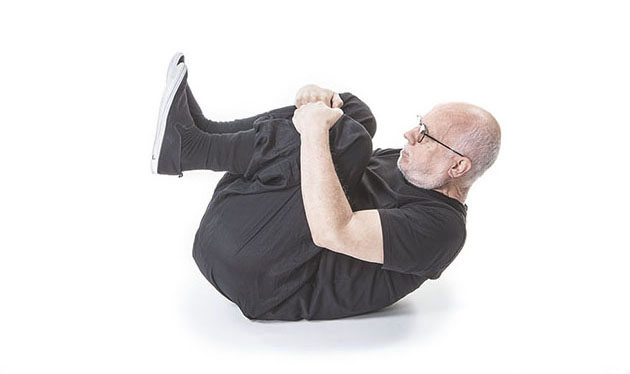
Next a simple spinal twist ... lying on the floor with your arms stretched out to the sides you bring your knees up. Then turn your legs from side to side ... repeat twenty one times.
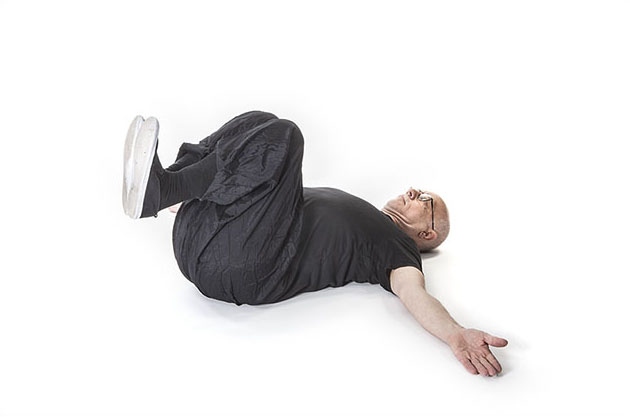
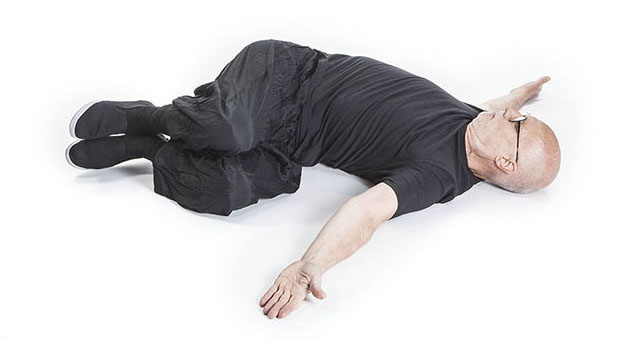
Then a more elaborate spinal twist ... turn your legs to one side, reach over all the way to the side your legs are turned, then twist your torso in the opposite direction, stretching your arm out all the way and putting the other shoulder on the floor ... ten to twenty one times; repeat with your legs turned to the other side.
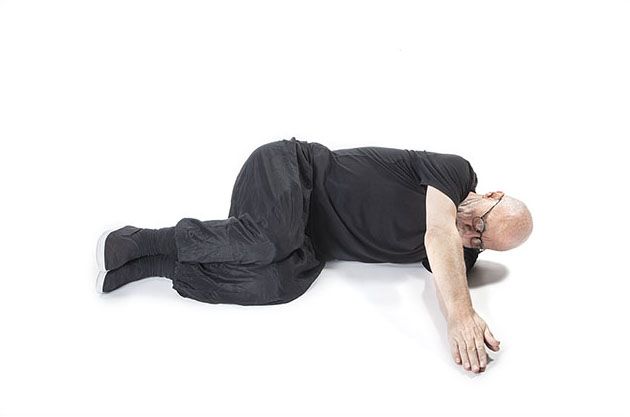
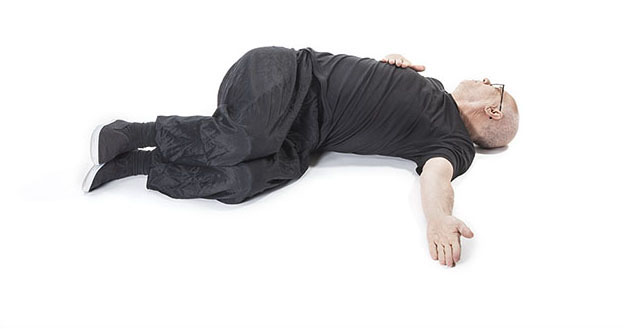
More spinal twists: Sit up, cross your legs and turn your torso from left to right ... again, do it with both legs.
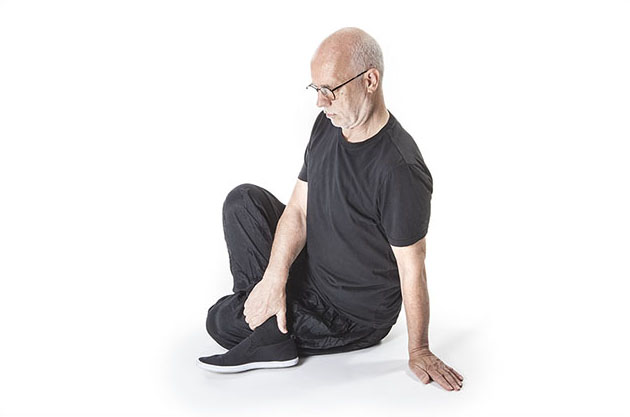
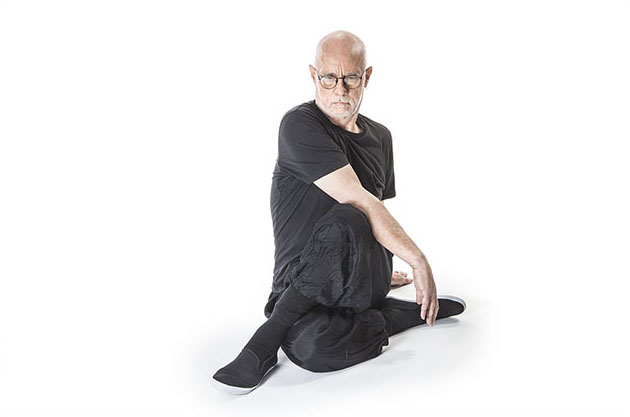
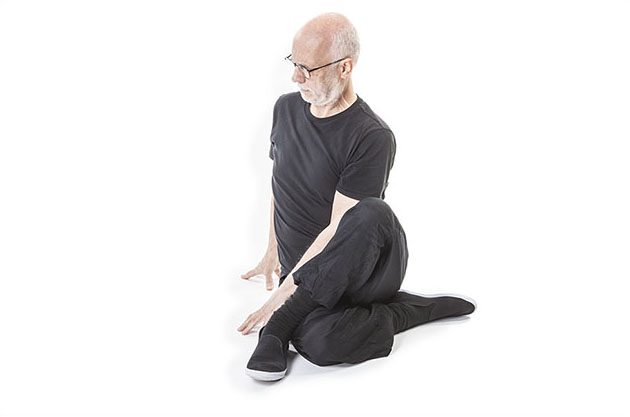
These (above) are the ones; after just a few weeks of exercising again my back pain is rather much gone; frankly, I am confident this improvement is largely due to the first three spinal twist exercises that I do.
Next the crunch ... lay on your back, bring your knees and your upper torso up as much as you can; I've seen people touch their knees with their nose!
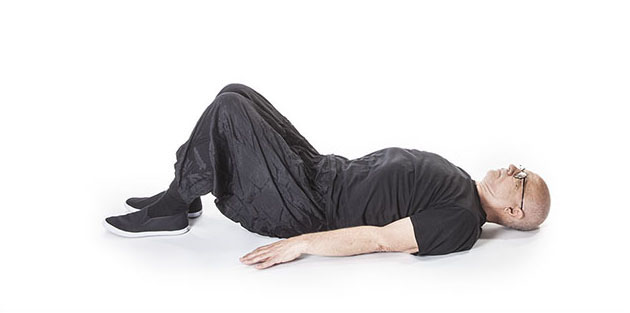
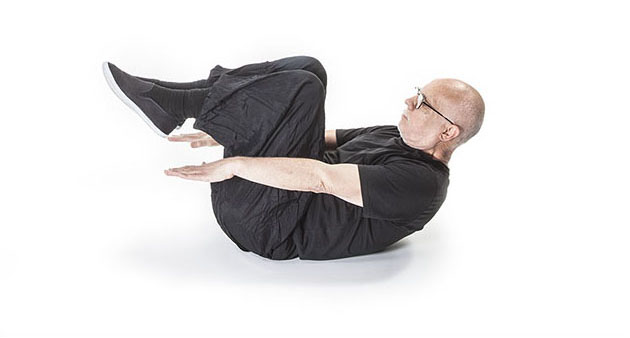
While we're here, let's also do the sit-up
(you may need to anchor your feet for this exercise).
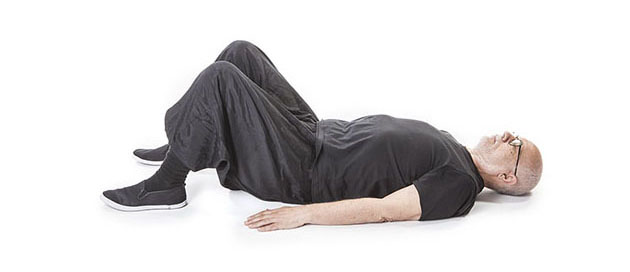
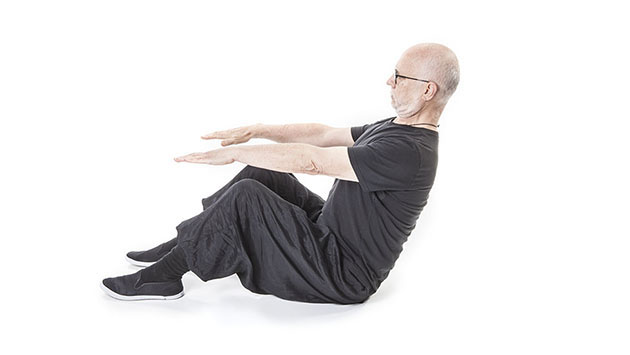
Then sit up straight and bend your upper body down, with hingeing it at the hips ... you should be able to touch your toes (if you do this for a couple of weeks, you probably will be able to; and - trust me - in the gym the die-hards put their chest to their thighs and arms around their calves).
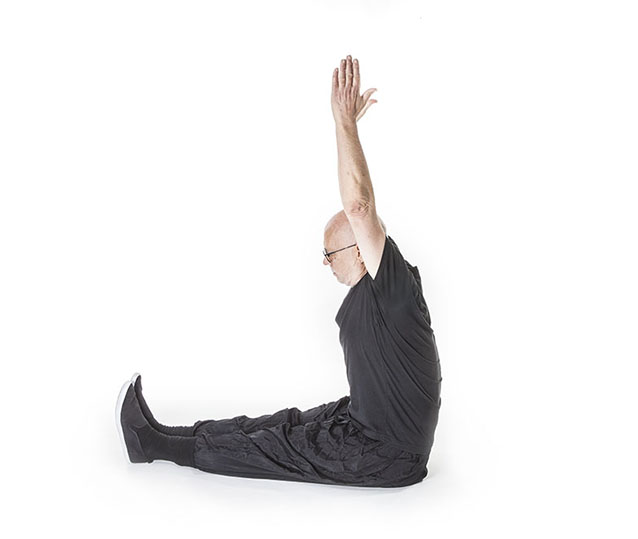
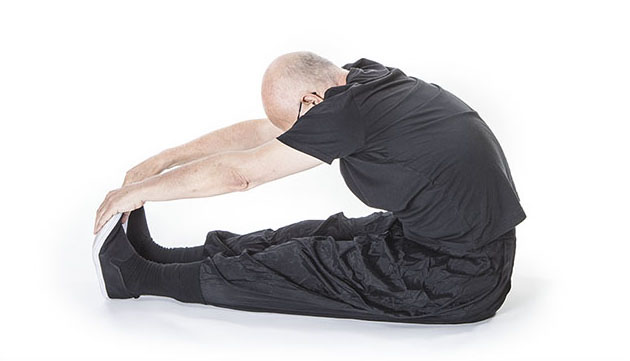
The leg stretch you shall do with the help of a little towel ... keep your legs straight, knee locked; don't forget to do both legs.
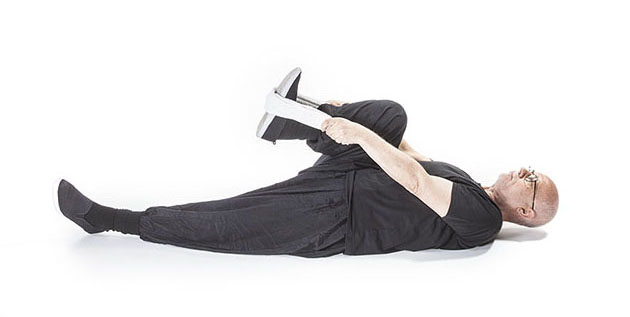
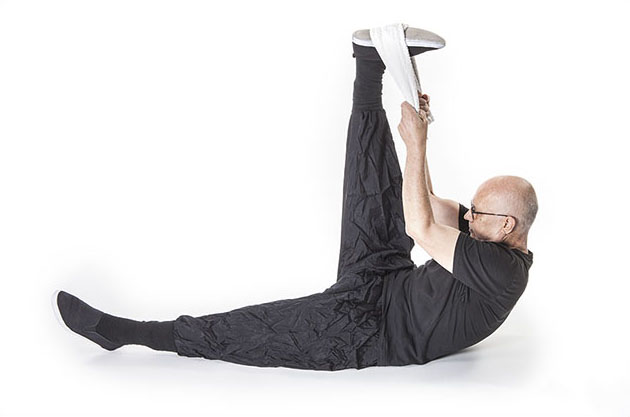
While you're on the floor, this is the hip thrust ... an essential exercise, I'm told.
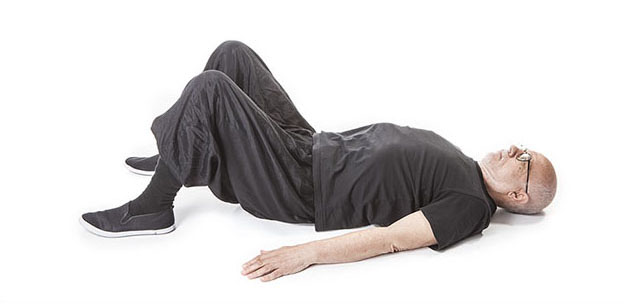
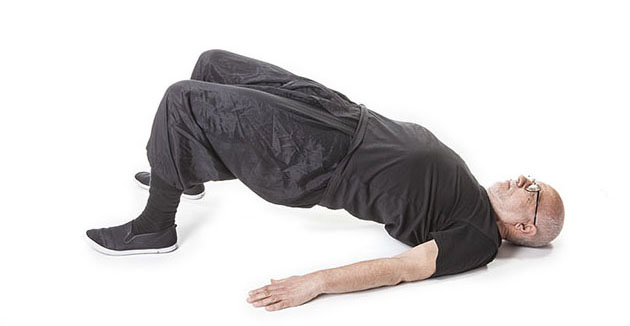
There are many variations on the hip thrust. You can do both hip thrusts, either up on your hands or lying down, with your shoulders on the floor ...
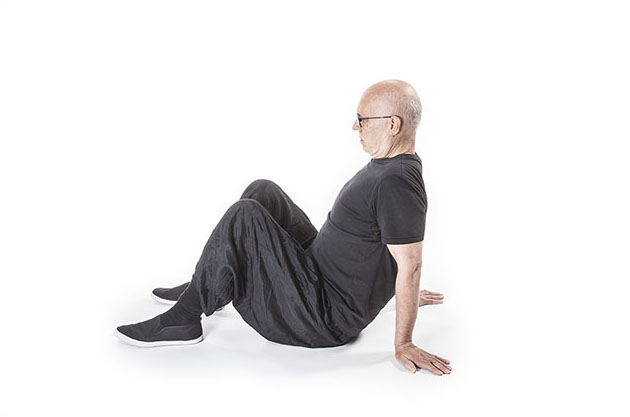
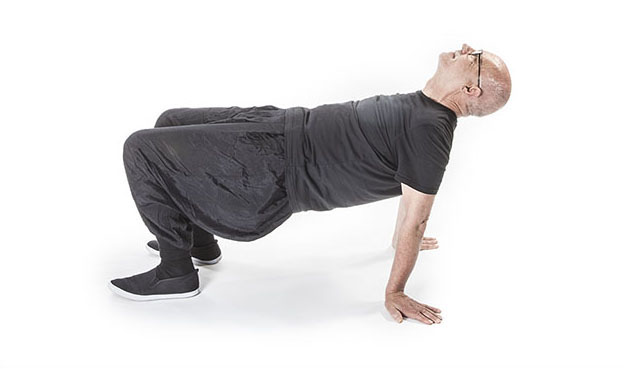
... and combined with a leg raise, also lying down or up on your hands; what's important is that you thrust your hips up - from a resting position - as far as they'll go ... again, when you do it with the leg-lift, alternate both legs.
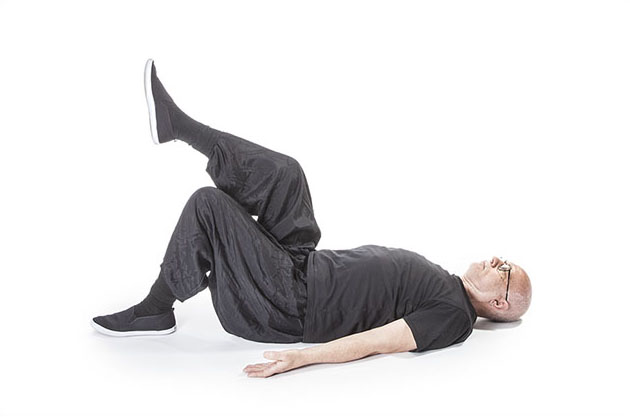
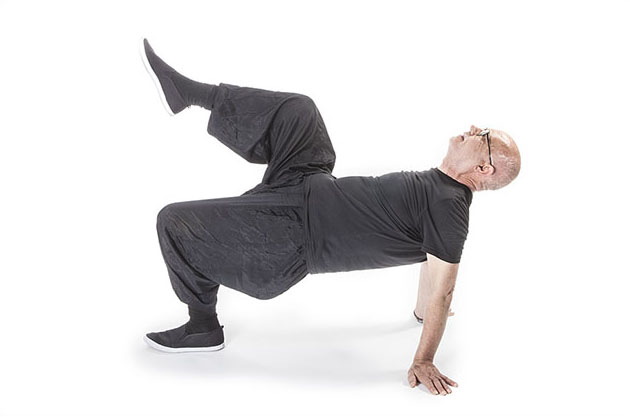
Another toe-touching exercise ... stand upright, again bend at your hips, keep your legs straight, knees locked. And yep, you guessed it: Some people put their face between their knees! To balance this spine stretch, bend over backwards at the hips.
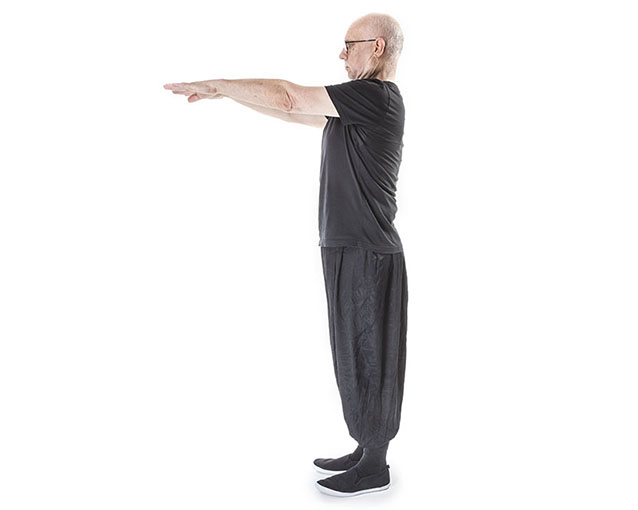
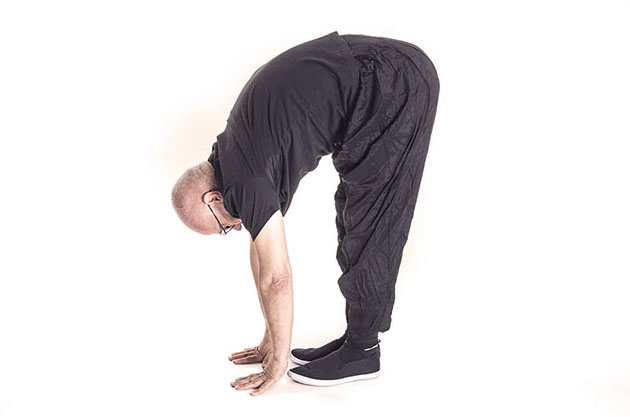
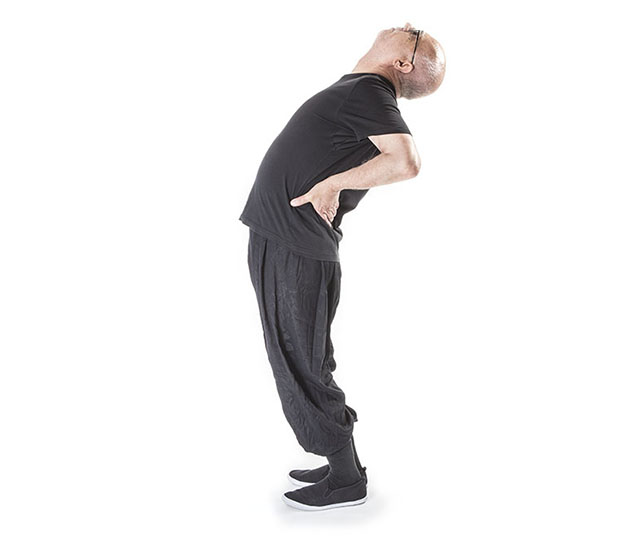
This is the squat; stand up straight, then bend your knees; you may not believe it ... but this is a very comfortable sitting position, about three quarter of the world population favour squatting over sitting on a chair ... and it's much better for us. Anyway, ages ago I wrote a blog about how the chair was a bad invention.

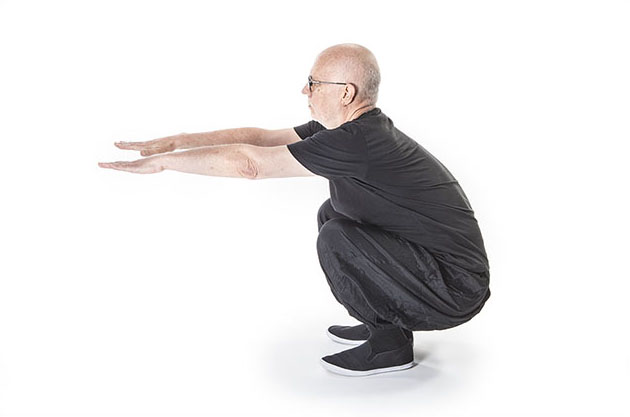
The push-up ... keep you back straight as you bend your elbows; start slowly, do three or four to begin with then add a couple each week. If you find it hard - especially in the beginning - you can do your push-ups with your knees on the floor. In either case ... chest close to the ground. The squat and push-up are said to be the king and queen of exercises. It's hard not to agree.
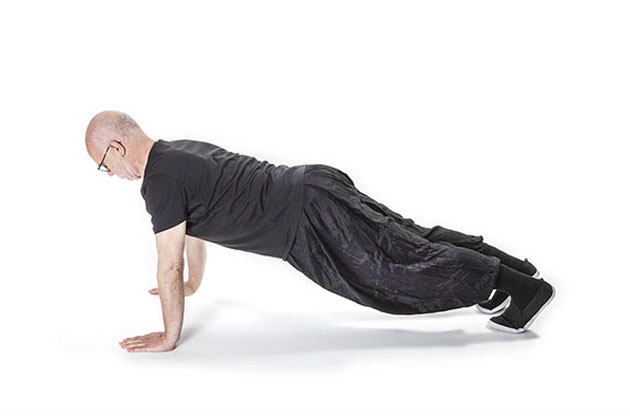
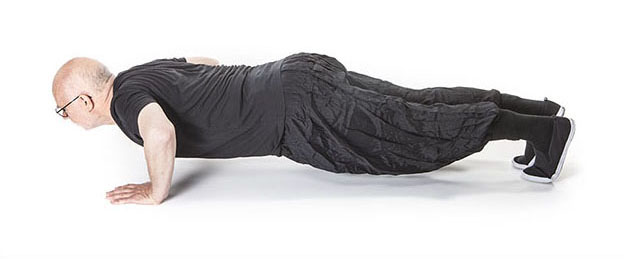
Next bend your back in both directions ... this is a version of the 'salute to the sun' a.k.a 'the cobra' (B.K.S. Iyengar calls it the 'serpent'), followed by the child's pose.
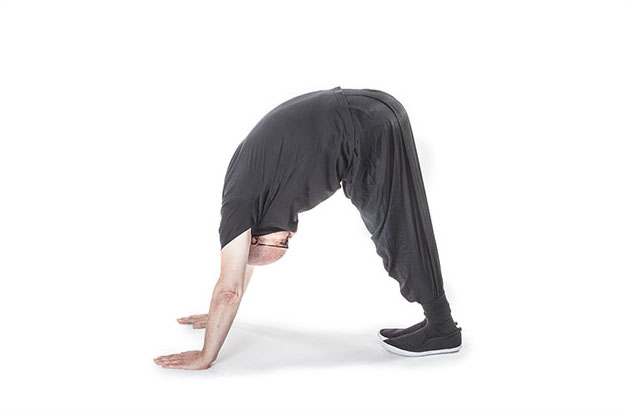
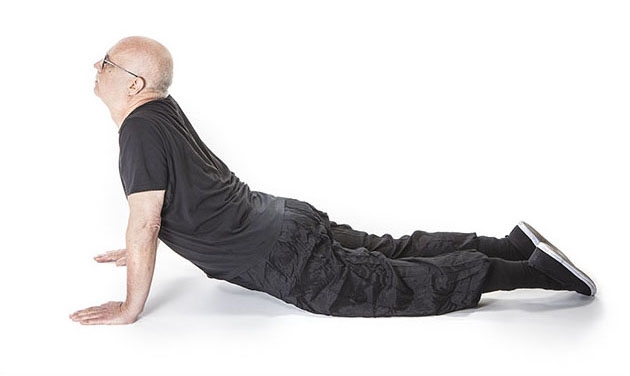
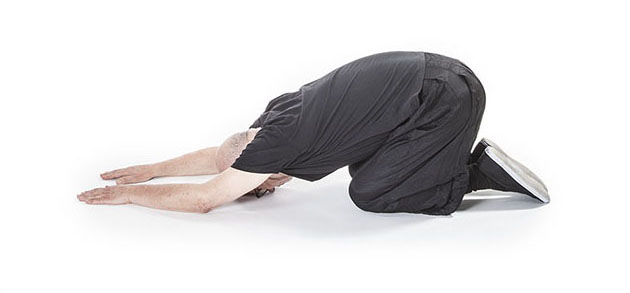
More bending ... from the plank (the first step of a push-up) bring one leg underneath your body, across your body ... then lower your body, coming to rest on your knee; rest for some ten to twenty seconds. Do it with both legs.
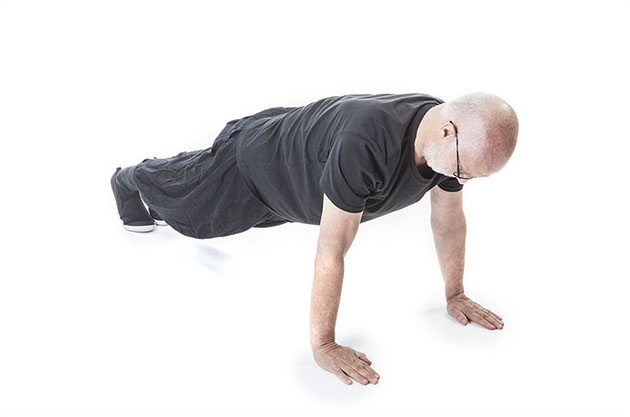
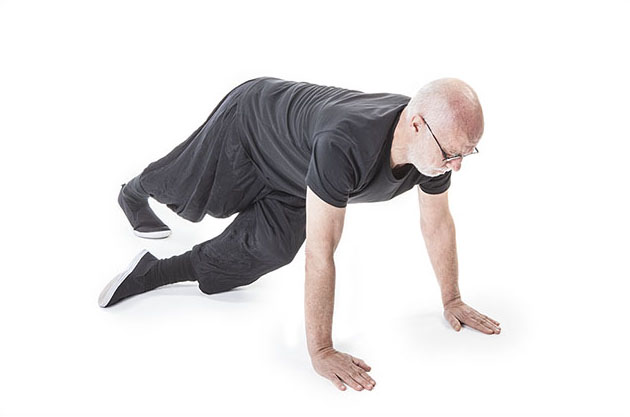
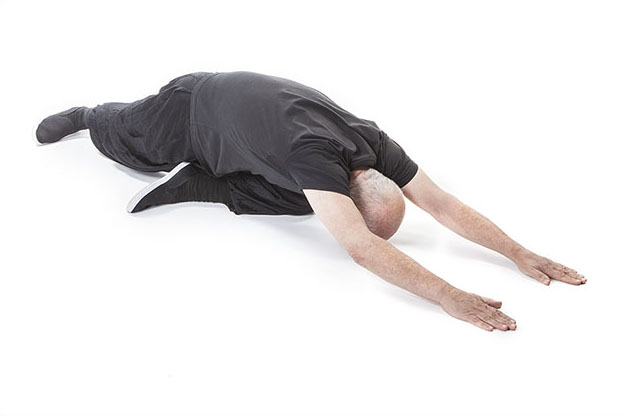
Even more bending of the back ... to counter the previous exercises: In yoga these are the cat & cow poses.
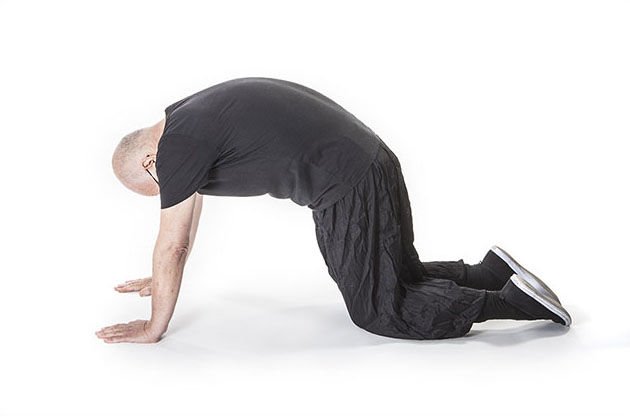
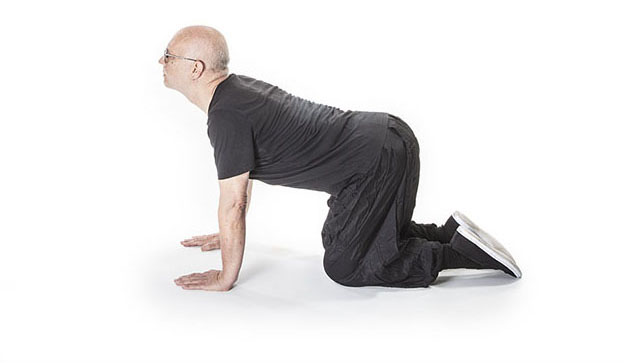
Now the lunge: Stand up straight and make a step, the weight of your body is on the front leg ... bend your knees, the one with your weight on it stays upright, bring the other one to the floor (both legs; don't cheat).
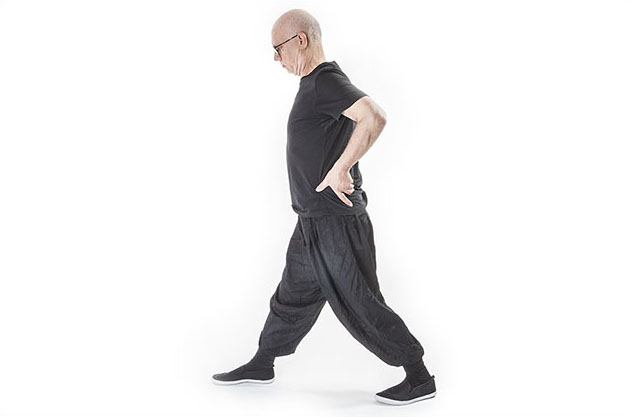
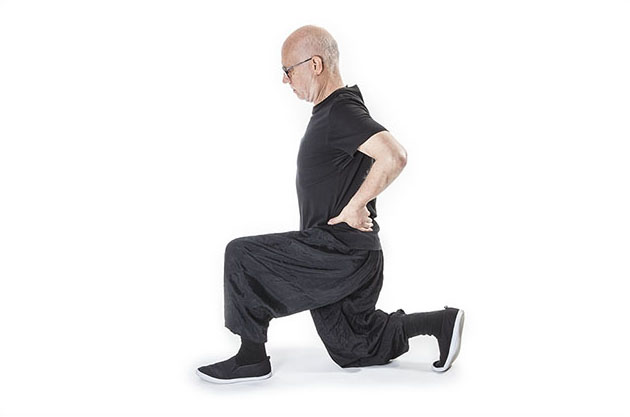
As you finish the lunge ... rotate your arms, open up your chest as much as you can. Remember with all exercises: Breathe deeply, do not hold your breath.
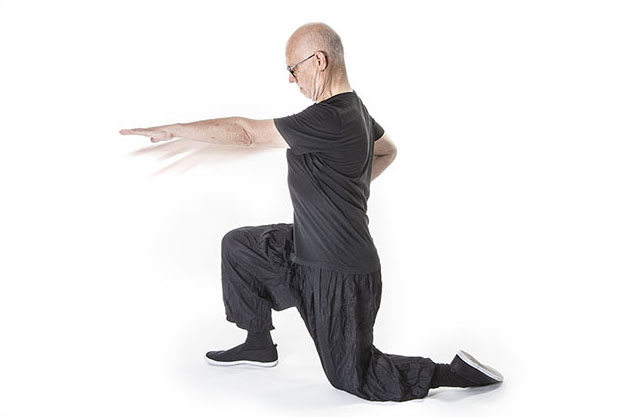
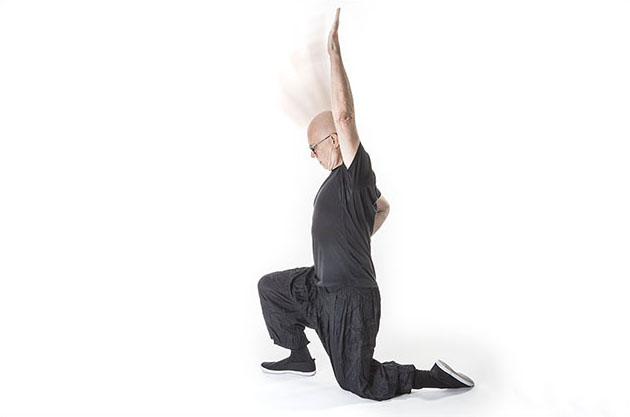
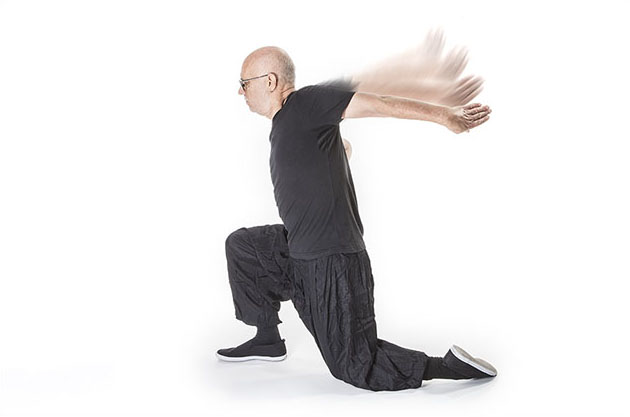
Now a simple strength-building exercise ... other than retaining mobility and flexibility, we must build muscle, as muscle-mass is fading with age (and - who would've guessed - fat-mass is increasing inexorably): Grab something you may have at home (a few heavy books, two-ltr milk containers ... I happen to have a couple of bricks), bend forward from the hips, keep your back straight, pull the weights up; btw, I was lazy - the elbows should come up higher (it's late; long day).
OK, you're done; congratulations ... you're on the way to a better you.
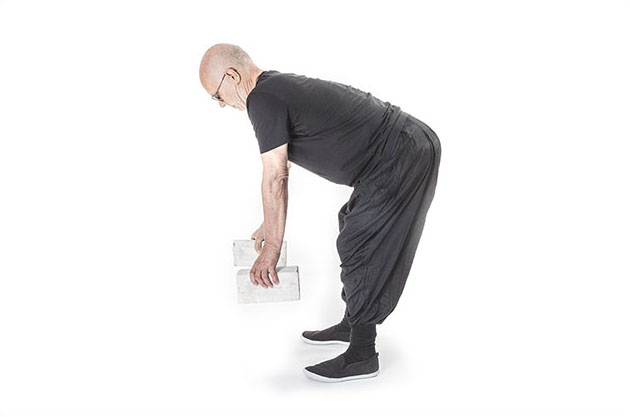
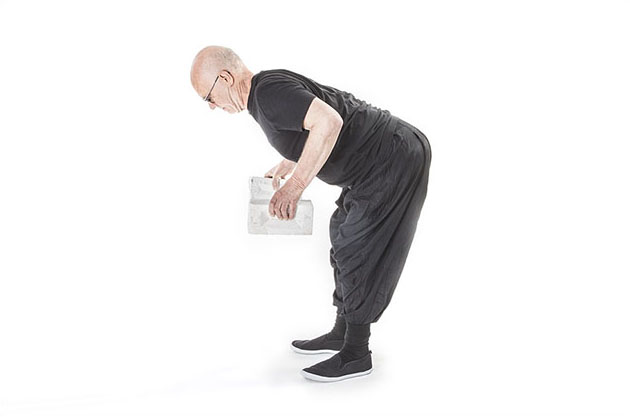
But wait, there's more ... flexibility, freely moving joints, no back-pain and all that, cool ... but that is only the beginning. Yoga exercises were 'invented' to prepare the body for meditation (some say yoga is meditation). Once we're in an exercise routine - once we made exercising a habit - we'll find it a natural progression to meditate too. Then the benefits are great: A peaceful disposition; the ability to deal with stress more effectively. And here's a promise: With regular exercises comes a time when you crave them ... you'll miss not exercising. Besides, you may well get inspired to tackle that other requirement for superior wellbeing too ... good nutrition. A healthy constitution is build on three pillars ... physical exercise; healthy eating (no drugs, alcohol, tobacco); a well adjusted mind. You should not have exaggerated expectations ... but the outcome may well be increased contentment and happiness. Go ahead, check these out ... I have many essays about YOGA and MEDITATION in my book with no name, instead three definitions for the term en.light.en.ment
